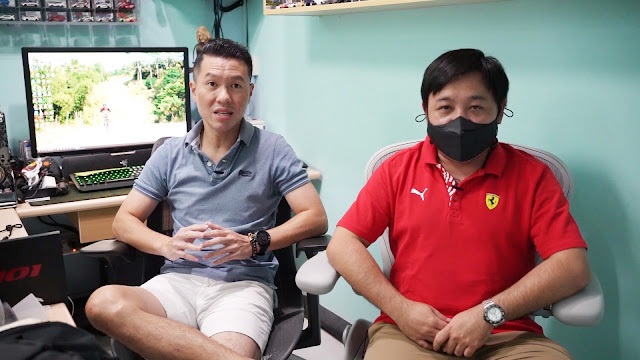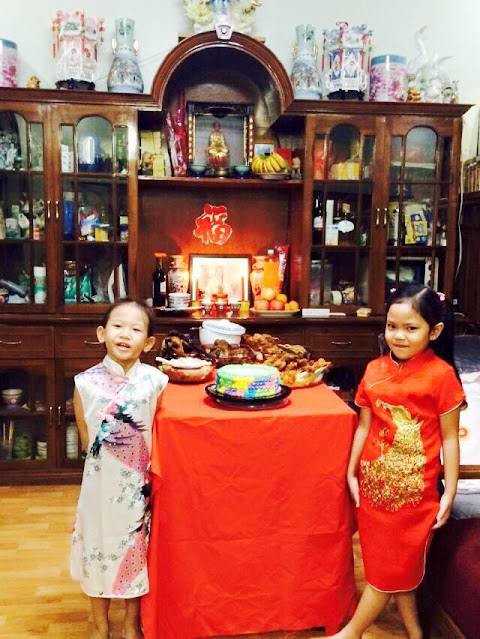“Welcoming
the Year of the Water Tiger”
SunStar Davao, January 29, 2022
“Out with the old and in with the new”! A Chinese proverb states that “all creations are reborn on New Year’s Day”. This 2022, Chinese New Year will fall on February 1.
You might be wondering why last year, Chinese New Year was celebrated on February 12 while in 2023, it will be on January 22. It is because the much-anticipated festivity is based on solar and lunar movements that represent time based on various days in different years on the Chinese calendar. Usually, the Chinese New Year is commemorated either in January or February.
And did you know that the commonly used greeting, “Kung Hei Fat Choi!”, is not synonymous with “Happy New Year!”? Instead, its meaning loosely translates to “Congratulations and be prosperous!”.
Attracting good
fortune
Celebrating the Chinese New Year is filled with
preparations to attract good fortune. According to the Chinese Zodiac, 2022 is
the Year of the Water Tiger.
To usher in the new year, the officers of the Davao City Chinatown Development Council share their family’s traditions and practices.
James Lao says that red is one of the luckiest colors in Chinese tradition. It is used on all family occasions such as birthdays, engagements, weddings, opening of new businesses, and on New Year’s Day. Red is believed to ward off evil spirits and bring good fortune. It symbolizes loyalty, wealth, success, and happiness.
“During Chinese New Year, there are red lanterns, red envelopes, and red paper hangings. When it comes to decorations, just about everything is red and ornamented in gold. Wearing red clothes is also practiced in welcoming the new year,” shares James.
Brothers Steve and Mark Arquiza eagerly looked forward to the Chinese New Year as kids because of the red envelope or ang pao. “Usually, the ang pao is a red envelope and it has money inside. It is given by our elders, usually our Angkong, Amah or parents. It is given during auspicious occasions like birthdays, weddings, or Chinese New Year. As per belief and tradition, both the giver and the receiver of the ang pao will have good luck,” says Steve.
Meanwhile, Jasper Fernandez explains that firecrackers are called “pao chu” in Mandarin which means bamboo explosions. In ancient China, bamboo stems were burned to create small explosions to drive away evil spirits. Today, firecrackers and fireworks are a notable tradition to express happiness and good luck.
 |
| The Go siblings celebrating CNYE in Digos, Davao del Sur. |
But, celebrating New Year in Davao City, where firecrackers and fireworks are banned, is different. Jasper Huang shares that Dabawenyos instead look for other ways to welcome the New Year using torotot or party horns; and making noises through pots, pans, and car horns.
Symbolical dining
This Chinese New Year, why don’t you organize your
very own Chinese dinner at home? After all, you don’t have to be Chinese to
welcome the Year of the Water Tiger.
Have an intimate thanksgiving dinner with your immediate household members (remember
to follow Covid-19 guidelines) to celebrate Chinese New Year’s Eve. At
midnight, open every door and window in the house as a physical “airing out” of
the old year and welcoming in the New Year.
Prepare oranges and a circular candy tray filled with a dazzling array of candies. And, don’t forget Davao’s very own juicy pomelos to signify abundance. In fact, the Chinese word for pomelo sounds like the word "to have." The candies and fruits represent togetherness, sweetness, longevity, children, and prosperity.
For Chinese New Year, businesswoman Ivy Teho-Colina prepares various dishes to bring good luck: “patatim for wealth; money or fortune pouch dumplings for prosperity; whole fish for increased wealth and position; prawns and shrimps for wealth and success; crabs which are considered as “money catchers”; whole chicken for offering to ancestors; spring rolls/lumpia for a ton of gold; sweet rice ball or the local bilo-bilo for family togetherness; noodles for longevity; and nian gao/glutinous rice cake for increased wealth.” She says six to eight dishes (preferably even-numbered) are to be enjoyed during the CNYE dinner.
Siblings Sheree and Bea Go always have tikoy during their Chinese New Year’s Eve dinner. It is made of sticky rice that symbolizes unity among family members. Its sweetness also symbolizes a rich and sweet life, and the round shape signifies family reunion.
“As we serve and give away tikoy to our friends and loved ones, may we be reminded of the importance of family as family is God’s blessing to us. Let’s honor and obey our parents. Let’s love and take care of our siblings as well as our relatives,” Sherrie enthuses.
Kung Hei Fat Choi!
Watch the 2022 Chinese New Year Virtual
Celebration on the official City Government of Davao Facebook Page on January
31, 2022, at 8:00 PM. The virtual event is organized by the City Government of
Davao through the Davao City Tourism Operations Office and the Davao City
Chinatown Development Council.
Special thanks to Dorren Go, Ivy Teho-Colina, Sundays Home Cooking, Davao Star Bakehouse and Hopia Factory, and the Davao City Chinatown Development Council for the photos you see on this page.























No comments:
Post a Comment